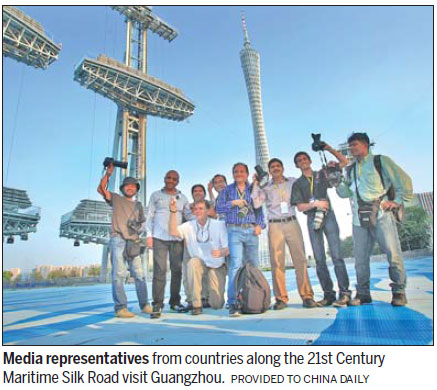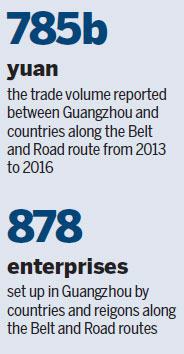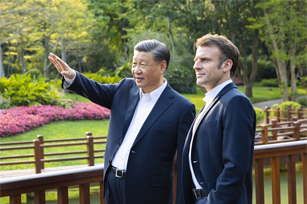Ports, rails, flights link province to global trade
Home to ports crucial to the construction of the 21st Century Maritime Silk Road, Guangzhou, capital of South China's Guangdong province, endeavors to be a driving force for trade and bilateral ties with countries and regions related to the Belt and Road Initiative.
Statistics from the Guangzhou commission of commerce show the trade volume between Guangzhou and countries along the route totaled 784.78 billion yuan ($113.68 billion) from 2013 to 2016.
Countries and regions along the Belt and Road routes have invested a total of $876 million and set up 878 enterprises in the city.

Guangzhou has initiated 93 projects in areas such as infrastructure, bilateral trade, industrial collaboration, cultural integration and platform construction under its three-year plan for advancing the 21st Century Maritime Silk Road, issued in 2015.
To further connect infrastructure between itself and countries and regions related to the initiative, Guangzhou has depended heavily on transport services by land, sea and air.
Last August, the city opened a freight train from South China to Europe, transporting total cargo valued at $40.52 million each week.
It is the latest freight train route launched by China to boost trade ties along the ancient Silk Road. Its cargo includes garments, shoes, hats, cloth, lighting, electrical appliances and electronics.
For shipping logistics services, Guangzhou has also opened sea routes at the city's Nansha port area for cargo trains from Jiangxi and Hunan provinces.

By the end of 2016, the city had tapped 166 international container waterways, among which 79 are foreign liners.
The city has established friendship ties with 38 ports including Mundra in India, Laem Charbang in Thailand and Hamburg in Germany.
In terms of air transport, the Guangzhou Baiyun International Airport opened and resumed 27 international airlines and 85 destinations in 43 countries and regions last year.
Guangzhou is also investing heavily in industrial and trade parks in several countries and regions related to the Belt and Road Initiative.
The Guangzhou Development District plays a vital role in boosting research and investment through a strategic project between China and Jazan Economic City in Saudi Arabia.
Guangzhou Pan Asia Polyester in the district plans to invest $4 billion in pure terephthalic acid and downstream industries, including wharfs, sewage plants, heat and power cogeneration and petrochemical heavy equipment manufacturing.
Xiang Xiaomei, head of the Institute of Industrial Economics Research at the Guangdong Academy of Social Sciences, said the city has a solid economic foundation to serve as a hub for ports, airlines and innovation.
"To be a city with broader international horizons, Guangzhou should set up more open economic platforms to first attract professionals and resources and then export them to other places," Xiang said.
wangjinhui@chinadaily.com.cn
(China Daily 05/15/2017 page29)



 Print
Print Mail
Mail

